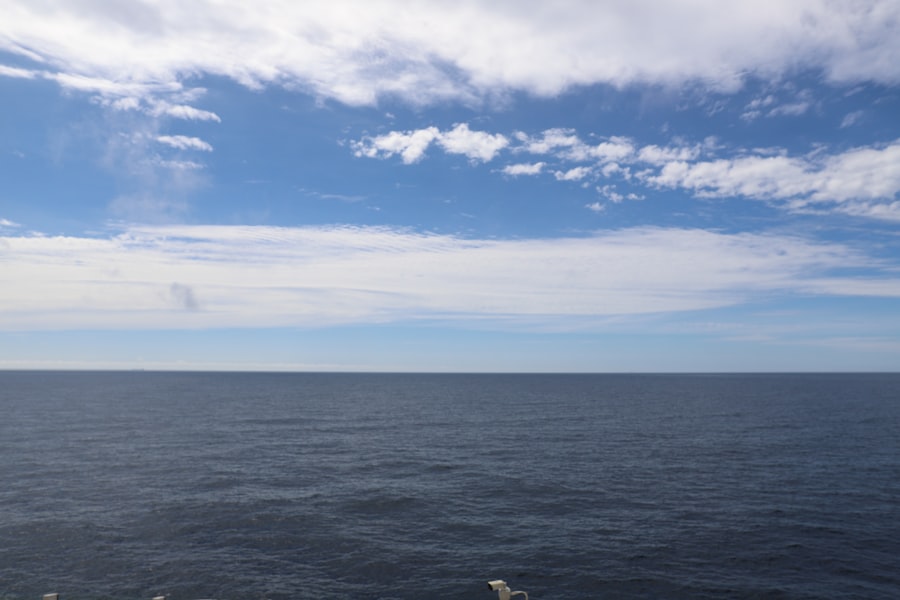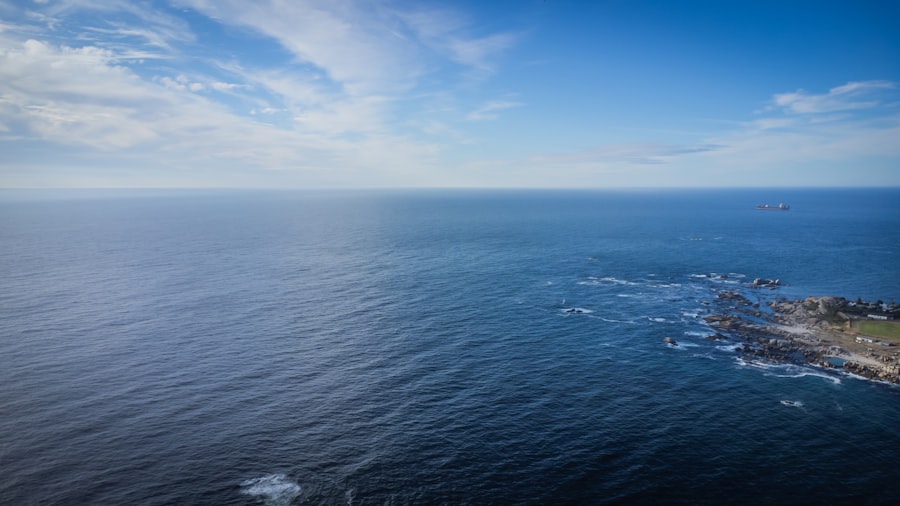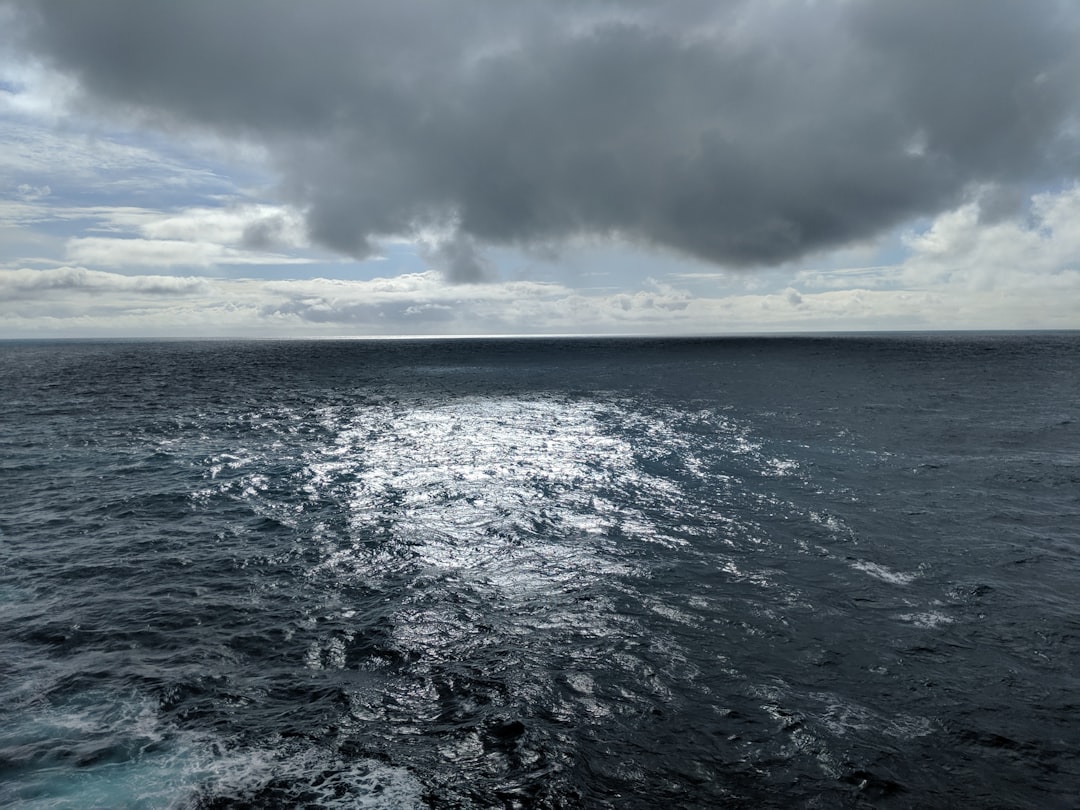The Drake Passage, a body of water that separates South America from Antarctica, is a significant geographical feature that plays a crucial role in the Southern Ocean’s dynamics. Stretching approximately 800 kilometers (500 miles) from Cape Horn in Chile to the Antarctic Peninsula, the passage is known for its turbulent waters and unpredictable weather patterns. The Scotia Sea, located to the north of the Drake Passage, is bordered by the South Shetland Islands and the South Orkney Islands.
Together, these two regions form a vital corridor for marine life and shipping routes, making them essential for both ecological and economic reasons. The geography of the Drake Passage is characterized by its deep oceanic trenches and underwater ridges, which contribute to its complex hydrodynamics. The passage is not only a critical pathway for ocean currents but also serves as a meeting point for various marine ecosystems.
The interaction between the cold waters from Antarctica and the warmer waters from the Atlantic creates a unique environment that supports a diverse range of species. This geographical interplay is vital for understanding the ecological significance of the region and its role in global climate patterns.
Key Takeaways
- The Drake Passage and Scotia Sea are located between South America and Antarctica, serving as a crucial gateway for ocean currents and marine life.
- The region experiences extreme weather and climate patterns, including strong winds, rough seas, and rapidly changing conditions.
- Navigating through the Drake Passage and Scotia Sea poses significant challenges and hazards, such as icebergs, strong currents, and unpredictable weather.
- The area is home to diverse wildlife and marine life, including penguins, seals, whales, and a variety of seabirds.
- The Drake Passage and Scotia Sea have a rich historical significance, with connections to exploration, scientific research, and conservation efforts.
Weather and Climate Patterns in the Region
The weather in the Drake Passage and Scotia Sea is notoriously unpredictable, characterized by strong winds, heavy precipitation, and rapidly changing conditions. The region experiences a maritime climate influenced by the Southern Ocean, with temperatures that can vary significantly throughout the year. During the summer months, temperatures can reach as high as 10 degrees Celsius (50 degrees Fahrenheit), while winter temperatures can plummet to below freezing.
This variability poses challenges for navigation and exploration, as conditions can shift from calm to stormy within a matter of hours. The climate patterns in this region are also influenced by larger atmospheric phenomena such as the Antarctic Oscillation and El Niño events. These factors can lead to increased storm activity and changes in sea ice distribution, further complicating travel and research efforts.
Understanding these weather patterns is essential for anyone planning to navigate through the Drake Passage or explore the Scotia Sea, as they can significantly impact safety and accessibility.
Navigational Challenges and Hazards

Navigating through the Drake Passage presents numerous challenges due to its treacherous waters and unpredictable weather conditions. The passage is infamous for its rough seas, often referred to as “the most dangerous stretch of water in the world.” Strong currents, high waves, and sudden storms can create hazardous situations for vessels of all sizes. Mariners must be well-prepared and knowledgeable about the region’s unique navigational challenges to ensure safe passage.
In addition to rough seas, icebergs pose another significant hazard in the Drake Passage and Scotia Sea. The presence of floating ice can obstruct shipping routes and create dangerous situations for vessels that are not equipped to handle such obstacles. Mariners must remain vigilant and utilize advanced navigation technology to detect ice formations and avoid potential collisions.
These challenges underscore the importance of thorough planning and preparation for anyone attempting to traverse this formidable maritime region.
Wildlife and Marine Life in the Area
| Species | Population | Threat Level |
|---|---|---|
| Sea Turtles | 5000 | Endangered |
| Dolphins | 200 | Vulnerable |
| Manatees | 300 | Threatened |
| Pelicans | 1000 | Least Concern |
The Drake Passage and Scotia Sea are teeming with diverse wildlife and marine life, making them a hotspot for researchers and nature enthusiasts alike. The nutrient-rich waters support a variety of species, including krill, which serve as a crucial food source for larger marine animals such as whales, seals, and seabirds. The region is particularly famous for its populations of humpback whales, orcas, and blue whales, which migrate through these waters in search of food during certain times of the year.
Birdwatchers are also drawn to this area due to its rich avian diversity. Species such as albatrosses, petrels, and penguins thrive in the harsh conditions of the Drake Passage and Scotia Sea. The sight of these magnificent birds soaring above the waves is a highlight for many travelers.
Conservationists emphasize the importance of protecting these habitats, as they are vital not only for wildlife but also for maintaining the ecological balance of the Southern Ocean.
Historical Significance of the Drake Passage and Scotia Sea
The historical significance of the Drake Passage cannot be overstated. It has long been a critical route for explorers, scientists, and traders seeking to navigate between South America and Antarctica. The passage was named after Sir Francis Drake, an English sea captain who sailed through these waters in the late 16th century during his circumnavigation of the globe.
His journey marked one of the earliest European explorations of this remote region, paving the way for future expeditions. Throughout history, the Drake Passage has served as a gateway for scientific research in Antarctica. Numerous expeditions have ventured through these waters to study climate change, marine biology, and glaciology.
The region’s harsh conditions have also made it a site of numerous shipwrecks, adding to its storied past. Today, it remains an area of interest for researchers seeking to understand the impacts of climate change on polar ecosystems.
Safety Precautions for Traveling through the Region

Traveling through the Drake Passage and Scotia Sea requires careful planning and adherence to safety precautions due to the region’s unpredictable weather and navigational hazards. Mariners are advised to equip their vessels with advanced navigation systems capable of detecting icebergs and monitoring weather patterns in real-time. Additionally, having a well-trained crew familiar with emergency procedures is essential for ensuring safety during voyages.
Travelers should also consider joining guided tours or expeditions led by experienced operators who specialize in navigating these challenging waters.
By prioritizing safety measures and seeking expert guidance, adventurers can enhance their experience while minimizing risks associated with traveling through this formidable maritime region.
Popular Routes and Itineraries for Exploring the Area
Several popular routes exist for those looking to explore the Drake Passage and Scotia Sea, each offering unique experiences and opportunities for adventure. One common itinerary involves departing from Ushuaia, Argentina, often referred to as the southernmost city in the world. From there, travelers embark on a journey across the Drake Passage to reach Antarctica’s stunning landscapes and wildlife-rich environments.
Another popular route includes visits to various islands within the Scotia Sea, such as South Georgia and the South Shetland Islands. These itineraries often feature opportunities for wildlife encounters, including penguin colonies and seal rookeries. Travelers may also have the chance to participate in guided excursions on land or kayak among icebergs while taking in breathtaking views of glaciers and rugged coastlines.
Research and Conservation Efforts in the Drake Passage and Scotia Sea
Research and conservation efforts in the Drake Passage and Scotia Sea are crucial for understanding and protecting this unique marine environment. Scientists from around the world conduct studies on various aspects of marine life, climate change impacts, and oceanography in this region. These research initiatives aim to gather data that can inform conservation strategies and policy decisions regarding marine ecosystems.
Conservation organizations are actively working to raise awareness about the importance of preserving these fragile habitats. Efforts include advocating for sustainable fishing practices, protecting critical breeding grounds for marine species, and promoting responsible tourism practices among visitors to the area. By fostering collaboration between researchers, policymakers, and local communities, these initiatives strive to ensure that future generations can continue to appreciate the natural beauty and ecological significance of the Drake Passage and Scotia Sea.
Cultural and Indigenous Connections to the Region
The cultural significance of the Drake Passage and Scotia Sea extends beyond its natural beauty; it is also intertwined with indigenous histories and connections. Indigenous peoples have inhabited regions along South America’s southern coast for thousands of years, developing rich cultural traditions that reflect their deep relationship with the land and sea. Their knowledge of local ecosystems has been passed down through generations, providing valuable insights into sustainable practices that can inform modern conservation efforts.
In recent years, there has been a growing recognition of the importance of incorporating indigenous perspectives into discussions about environmental stewardship in this region. Collaborative initiatives between indigenous communities and researchers aim to honor traditional knowledge while addressing contemporary challenges such as climate change and habitat degradation. By fostering dialogue between cultures, there is potential for more holistic approaches to conservation that respect both ecological integrity and cultural heritage.
Tips for Planning a Trip to the Drake Passage and Scotia Sea
Planning a trip to the Drake Passage and Scotia Sea requires careful consideration of various factors to ensure an enjoyable experience. First and foremost, travelers should research reputable tour operators that specialize in expeditions to this region.
Travelers should also prepare for varying weather conditions by packing appropriate clothing layers suitable for cold temperatures and wet environments. Waterproof gear is highly recommended due to potential rain or splashes from waves during boat excursions. Additionally, bringing binoculars can enhance wildlife viewing opportunities while exploring this biodiverse area.
Future Challenges and Opportunities for the Area
As climate change continues to impact global ecosystems, future challenges loom over the Drake Passage and Scotia Sea. Rising sea temperatures threaten marine life populations while altering migratory patterns among species such as whales and seabirds. Additionally, increased shipping traffic due to melting ice in polar regions raises concerns about pollution risks and potential disturbances to fragile habitats.
However, these challenges also present opportunities for innovation in conservation efforts within this region. Advances in technology allow researchers to monitor environmental changes more effectively while developing strategies aimed at mitigating human impacts on marine ecosystems. By fostering collaboration among scientists, policymakers, indigenous communities, and conservation organizations, there is potential for creating sustainable solutions that protect both biodiversity and cultural heritage in this remarkable part of our planet.
The Drake Passage and the Scotia Sea are critical components of the Southern Ocean, playing a significant role in global ocean circulation and climate regulation. For those interested in exploring more about these fascinating regions, a related article can be found on MyGeoQuest, which delves into the unique geographical and oceanographic features of these waters. This article provides insights into the dynamic environment of the Drake Passage and the Scotia Sea, highlighting their importance in marine biodiversity and scientific research. To learn more, you can visit the article by clicking on this link.
WATCH NOW! Drake Passage: Earth’s Deadliest Waters Revealed
FAQs
What is the Drake Passage and Scotia Sea?
The Drake Passage is the body of water between the southern tip of South America and the northern tip of the Antarctic Peninsula. The Scotia Sea is located to the east of the Drake Passage and is bounded by South Georgia, the South Orkney Islands, and the South Sandwich Islands.
What is the significance of the Drake Passage and Scotia Sea?
The Drake Passage and Scotia Sea are important for oceanic and atmospheric circulation, as they connect the Atlantic, Pacific, and Southern Oceans. They also play a crucial role in the distribution of marine life and the movement of Antarctic Bottom Water, which helps drive global ocean currents.
What are the weather and sea conditions like in the Drake Passage and Scotia Sea?
The Drake Passage and Scotia Sea are known for their notoriously rough and unpredictable weather and sea conditions. Strong winds, large waves, and rapidly changing weather patterns are common in this region, making it one of the most challenging maritime environments in the world.
What wildlife can be found in the Drake Passage and Scotia Sea?
The Drake Passage and Scotia Sea are home to a diverse range of marine life, including whales, seals, penguins, and various seabird species. The nutrient-rich waters support a thriving ecosystem, making it a popular destination for wildlife enthusiasts and researchers.
What are the main activities in the Drake Passage and Scotia Sea?
The main activities in the Drake Passage and Scotia Sea include scientific research, wildlife observation, and maritime transportation. The region is also a popular route for expedition cruises to Antarctica, offering visitors a chance to experience the unique natural beauty and wildlife of the area.
